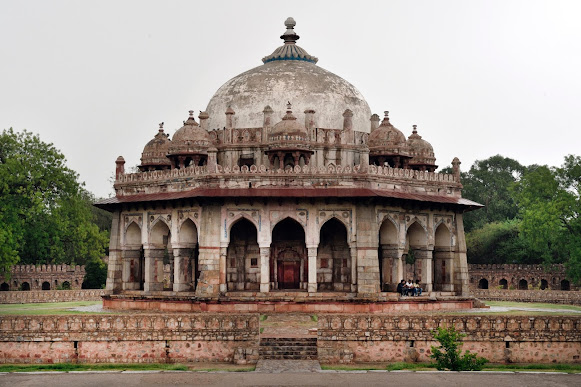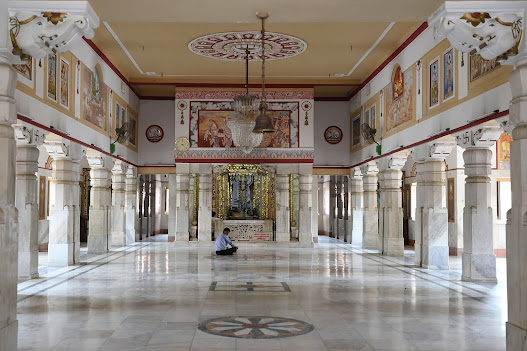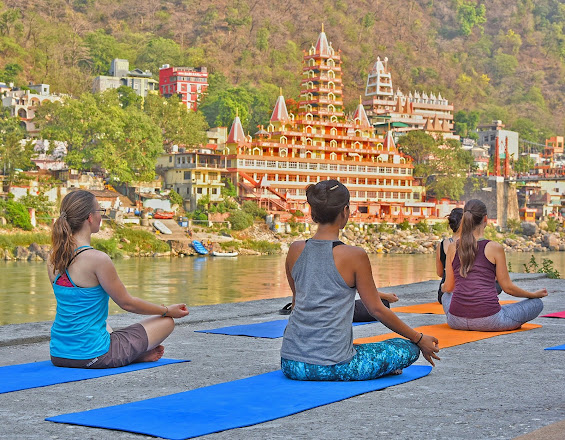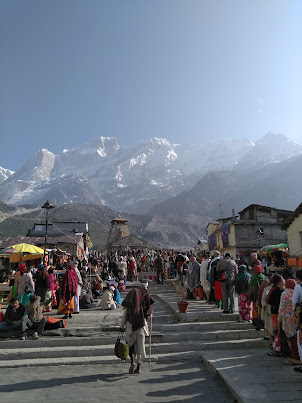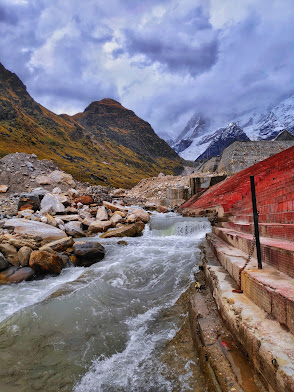New Delhi
New Delhi is the capital of India and the administrative region of the National Capital Territory of Delhi. New Delhi is the chair of all three branches of the Indian government, which oversees Rashtrapati Bhavan, Parliament House and the Supreme Court of India.
Although colloquially Delhi and New Delhi are interchangeably used to refer to the National Capital Territory of Delhi (NCT), these are two different things, New Delhi forms a small part of the city of Delhi. The National Capital Region is the largest organization comprising the entire NCT and affiliated provinces in neighboring provinces, including Ghaziabad, Noida, Gurgaon and Faridabad.
The foundation stone of New Delhi was laid by George V during the 1911 Delhi Durbar. The new capital was opened on 13 February 1931, by Viceroy and Governor-General Irwin.
History: Until December 1911 Calcutta was the capital of India during the British Raj era. However, it has been the center of ethnic movements since the late nineteenth century, which led to the division of Bengal by Viceroy Lord Curzon. This has caused much political and religious turmoil, including the political assassination of British officials in Calcutta. The anti-colonial sentiments in the community led to the complete deportation of British goods, which forced the colonial government to unite Bengal and quickly relocate the capital to New Delhi.
Old Delhi served as the political and financial center of several ancient Indian and Delhi Sultanate kingdoms, especially in the Mughal Empire from 1649 to 1857. In the early 1900's, a proposal was made to the British authorities for the conversion of the British capital, as India was officially called, from Calcutta on the east coast, to Delhi. The British Government of India realized that it would be easier to control India from Delhi, in central India. [9] The site of the new Delhi city was acquired under the Land Acquisition Act of 1894.
Geography: With a total area of 42.7 km2 (16.5 sq mi), New Delhi forms a small part of the capital city of Delhi. Since the city is located on the Indo-Gangetic Plain, there is little difference in the height of the city. New Delhi and surrounding areas were once part of the Aravali Program; what remains of the mountains is Delhi Ridge, also known as the Lungs of Delhi. While New Delhi lies on the plains of the Yamuna River, it is actually a telephone-free city. On the east side of the river is the town of Shahdara.
Religion: According to the 2011 Census, Hinduism is the religion of New Delhi's 89.8%. Other religious groups include Parsis, Buddhist and Jews.
Top attractions in Delhi and New Delhi:
The beautiful Red Fort was built by Shah Jahan in 1648 and served as the seat of the Mughal power until 1857. This magnificent building, with its long red stone walls, covers an area of more than two square miles [2 sq km], complete with a crescent-shaped structure and surrounded by a canal. The impressive gateway, the Lahore Gate, is named after its approach to Lahore in Pakistan, while the Great Gate of Delhi was used by the emperor for ceremonial occasions.
Entering the Lahore Gate, visitors come to Chhatta Chowk, a large 17th-century marketplace where silk, jewelry, jewelry, and silverware, as well as souvenirs and foodstuffs, can be purchased. Naubat Khana inside the Red Fort once housed musicians who played for the emperor, and its magnificent pavilions still have many pleasing musical instruments such as kettledrums, bells and cymbals. Diwan-i-Am, the Public Hall, where the governor will receive his subjects, should also be identified with its white marble.
2. Qutub Minar :
Completed in the 12th century, the beautiful Qutub Minar-India's tallest minaret and now a UNESCO Word Heritage Site-attracts many international visitors eager to climb to the top for its breathtaking views of the surrounding area.
This ornate five-story tower rises more than 70 meters and is covered with intricate carvings featuring the history of Qutub along with inscriptions from the Koran. It's also notable for being constructed of a number of different types of stone (the first three stories are made of red sandstone, while the fourth and fifth stories were built with marble and sandstone).
The complex also includes the Quwwat-ul-Islam Masjid, a mosque at the base of the tower; a gateway built in 1310; the tombs of Altamish, Alauddin Khalji, and Imam Zamin; and a 2,000-year-old Iron Pillar, the Alai Minar.
A variety of other important tombs can be seen in Lodi Gardens, a New Delhi city park that covers some 90 acres of land. This former Lodi site (the Lodi's ruled parts of northern India prior to the 1600s) is a particularly popular spot for residents to stroll, making it an exceptional destination for tourists.
3. Gurudwara Bangla Sahib :
Delhi's most important Sikh place of worship, the 18th-century Gurdwara Bangla Sahib is near Connaught Place and is well worth a visit. Highlights include its magnificent pool, the Sarovar, at the heart of this large complex, as well as its famous gold dome and flagpole.
Also of note is the large temple building itself, along with its art gallery and a small museum dedicated to the history of the Sikh religion. Visitors are always welcome here, and an excellent meal is available at no cost in the large Gurdwara Kitchen-all that is asked in return is your hair be covered and shoes removed (free headscarves and shoe storage are provided).
Address: Ashoka Road, Hanuman Road Area, Connaught Place, New Delhi, Delhi 110001
4. The Lotus Temple :
The magnificent Bahá'í House of Worship, also known as the Lotus Temple due to its nine sides and stunning central dome, is an architectural masterpiece. Constructed of white concrete and marble, the entire structure looks as delicate as the flower it resembles. Rising from the surrounding nine pools of water, it almost appears as if it might burst into bloom at any moment. Built in 1986, the temple has since attracted more than 70 million visitors, making it one of the world's most visited attractions (interestingly, this remarkable place of worship has no idols, religious pictures, or outward symbols of religion).
Another modern day temple worthy of a visit is the ISKCON Temple, one of the country's biggest Krishna temple complexes.
5.India Gate :
Looking a little like the famous Arc de Triomphe in Paris, the equally impressive India Gate is a magnificent stone arch built as a memorial to Indian soldiers killed in WWI. An eternal flame burns beneath the massive structure, and its walls are inscribed with the names of more than 90,000 soldiers who died in the conflict.
Standing on a base of red stone and featuring a shallow domed bowl on top that is occasionally filled with burning oil (usually only on important anniversaries), the structure dominates the parkland around it, an always busy area with crowds of tourists and locals alike enjoying a picnic or simply relaxing. For a real treat, try to see the India Gate at night, considered one of the top free things to do in New Delhi; it's a spectacular sight when it and nearby fountains are floodlit.
3.By Train :
Delhi is the headquarters of the Northern Railways and there are five major railway stations in Delhi, namely the The New Delhi Railway Station, Old Delhi Railway Station, Nizamuddin Railway Station, Anand Vihar Railway Terminal and Sarai Rohilla. The New Delhi Railway Station is one through which most trains arrive and depart from Delhi and is located in Paharganj, near Connaught Place. There is a pre-paid taxi booth outside the railway station and you can take a taxi from here to go further into the city.
The Delhi Metro line 2 also connects the New Delhi Railway Station to other parts of the city and is a convenient way to get into the city. There are also DTC buses (green and red coloured buses) which can take you into the city at a reasonable price. Apart from that you can also take auto rickshaws to places like Connuaght Place and Old Delhi. Though autos are supposed to go by the fare metre, many times they refuse to do so and it is best to ask a local how much the rough cost to a destination should be to make sure you are not cheated. You can also hop into a cycle rickshaw if you’re going to Connaught Place, though cycle richshaws are not allowed inside Connaught Place and you’ll be dropped slightly away from your destination.
4.Road/Self Drive :
Delhi is well connected by a strong network of highways and you can enjoy a comfortable drive to Delhi with fun stops along the way. Delhi is connected to Jaipur by NH 8 and Agra by NH2. The city is also well connected to destinations like Dehradun, which is located at a distance of 243 kilometers and is four and a half hours drive away. Other cities Delhi is well connected to are, Chandigarh (243 kilometers), Amritsar (448 kilometers) and Alwar (168 kilometers) among others



















